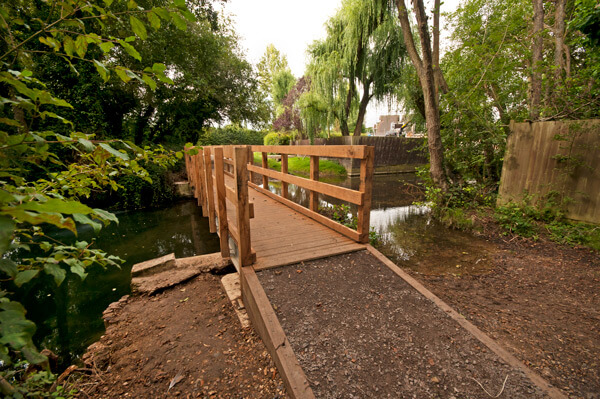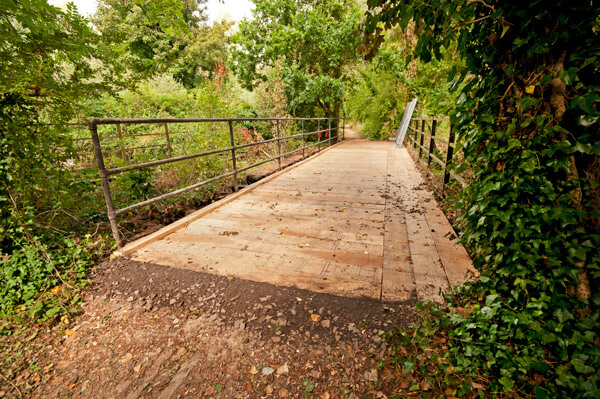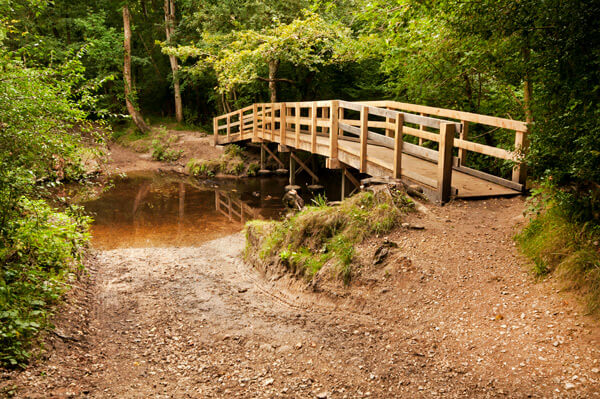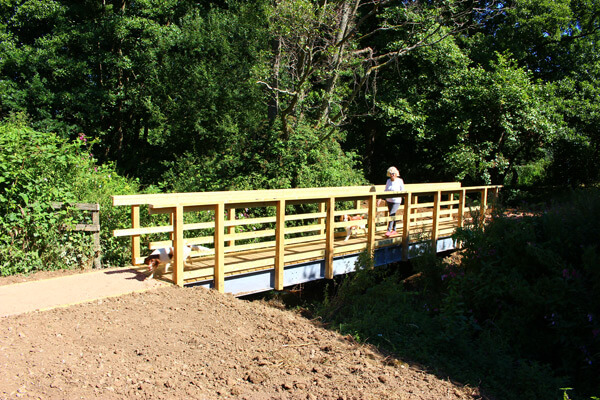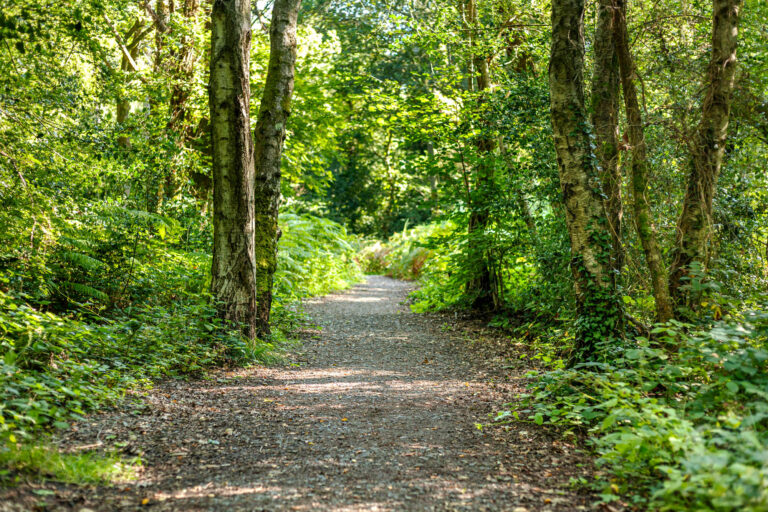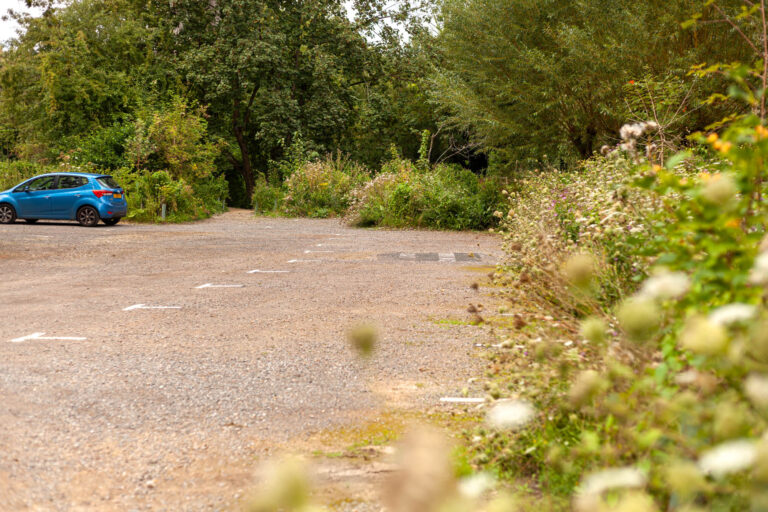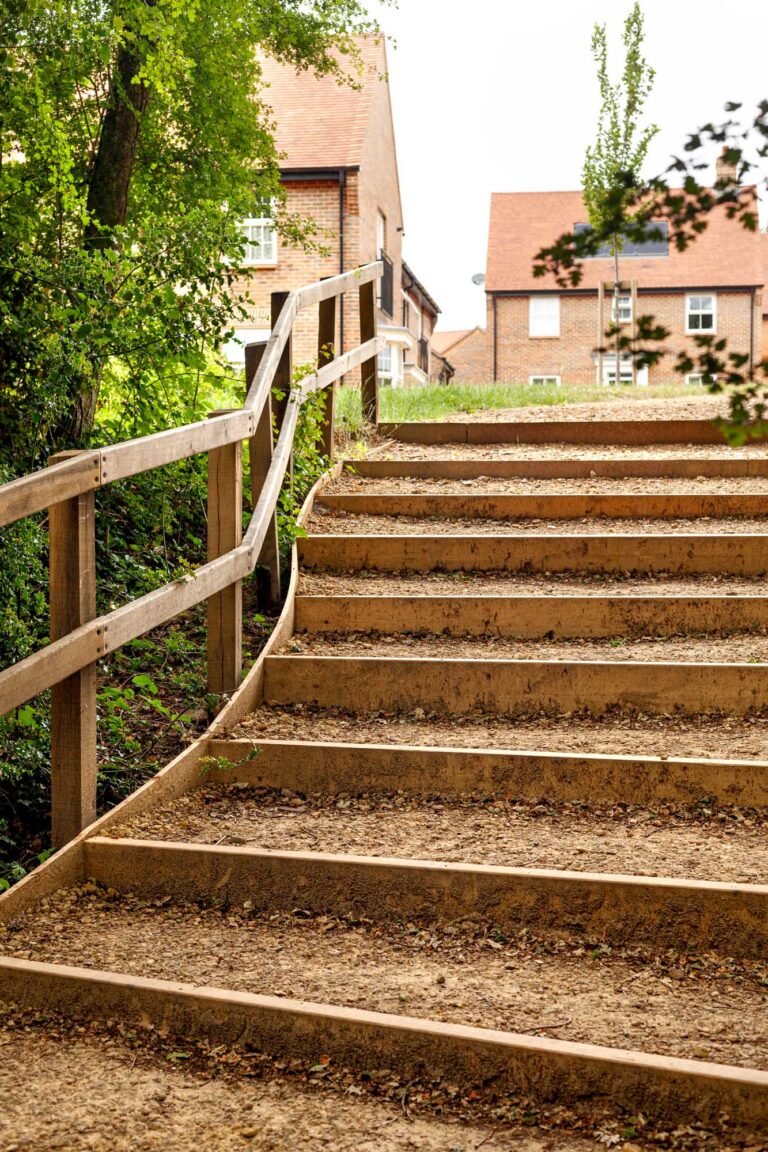In 2016, Aquascience successfully tendered for three separate but concurrent packages of bridge repairs and replacements spread all over Hampshire. Within these three tender packages, 18 bridges were included, with requirements ranging from replacing sleepers on old railway bridges to completely removing and replacing derelict and dangerous bridges on public rights of way.
All of the bridges that were replaced met the requirements of the right of way (e.g. on a bridleway, horse riders must be accounted for) whilst also seeking to best imitate the bridge that was being replaced. This resulted in a wide range of finished structures with no two bridges being the same. Single span bridges up to 7m in length were completed entirely in timber, anything longer than 7m but still required to be single span was installed as a composite bridge – the primary and secondary structural elements were all galvanised steel, with the decking and furnishings being a combination of hard and softwood.
Our longest single span bridge was a 19m composite, crossing the River Rother near Petersfield. The longest bridge of all was a 38m piled, all timber bridge, crossing the River Test in Longparish.
The majority of these bridges required individual, bespoke permit applications for either an Environmental Permit or an Ordinary Watercourse Consent, all of which were applied for in full by Aquascience. Combining the permits with the design works, surveying, access requirements, material orders and labour distribution gives an insight into the capability of the Aquascience team in overcoming logistical challenges.
Each bridge is structurally verified by an retained engineer on behalf of Aquascience, providing loading calculation based on the abutments and main structural elements.


